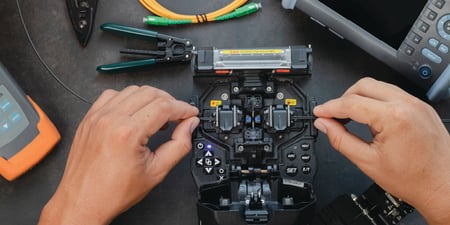
The relative costs involved in connecting subscribers to fiber networks can be deceptive. The critical element when evaluating fiber connections to make in the drops to the premises or even inside homes in an FTTX installation is not materials, but time.
Fiber splicing technicians have specialized training that makes them expensive when compared to someone simply plugging things in. 80% of costs for an FTTP deployment go to labor.



As it turns out, fusion splicing makes a lot of sense for trunk fibers and locations where there are anywhere from 48 to 192 fibers to splice. In the drop locations, where there may be only one or two splices at each location, the setup time for each location may negate any cost savings from fusion splicing.
A single fusion splice may be something like $.50 vs. a mechanical splice of $5-12. On the surface of it, fusion splicing is less expensive. But when you add in the cost of the setup time for one splice, it more than negates the cost savings of the splice by adding the labor time. At $60-120/hr, a fusion splice in a drop location will cost $30-$60 labor plus the splicing cost.
A mechanical splice would also require cable prep time, plus the $5 - $12 connector price. Even less expensive than that is using pre-terminated fiber cable. At the cost of a little more careful planning as to lengths of fibers needed, pre-terminated fibers can be installed quickly and with no training.
In the charts below from the Fiber Optic Association you will see the setup times and task times required for fusion splicing.
Fusion Splice - Metric Benchmarking
1 x Fiber Tech Per Joint

2 x Fiber Techs or a Fiber Tech and Assistant Per Joint
 As fiber migrates into MDUs, office optical interfaces, or inside homes with fiber CPE devices, each splice becomes more and more expensive because of the setup time.
As fiber migrates into MDUs, office optical interfaces, or inside homes with fiber CPE devices, each splice becomes more and more expensive because of the setup time.
The best option might be a single uninterrupted run that doesn’t require splicing, or a mechanical splice. The fact that mechanical splices have higher losses than fusion splicing is much less important in the drop because the loss applies to only one home or location, whereas that loss in the trunk fiber would affect the system as a whole.



